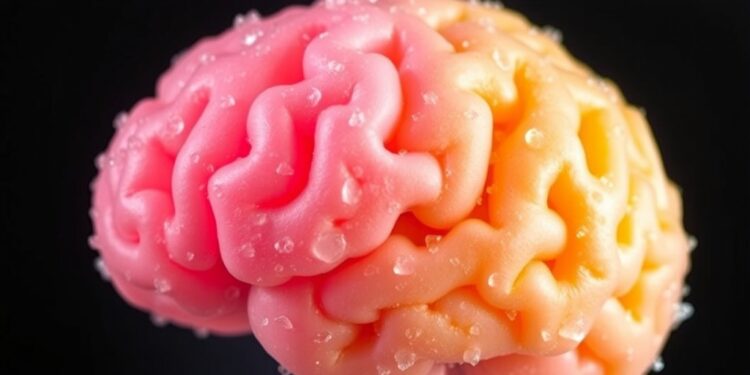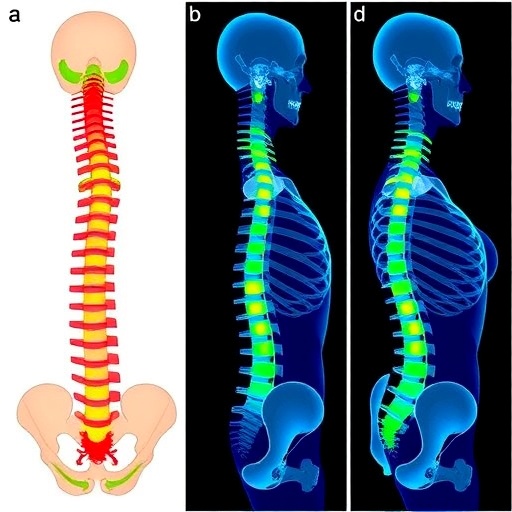
A groundbreaking investigation by Stanford researchers has unveiled that a pivotal aspect of brain aging, long overlooked, lies in the realm of sugars. For decades, neuroscience has prioritized proteins and DNA as the key players in cognitive function and decline. However, this innovative research team directed their focus toward the glycocalyx—complex sugar chains that envelop the surface of cells like protective armor. This significant shift in perspective may lead to transformative insights into aging, cognitive decline, and neurodegenerative conditions such as Alzheimer’s disease.
The glycocalyx plays a vital role in cellular communication and protection. It comprises glycoproteins, glycolipids, and polysaccharides, all of which interact dynamically with their environment. In particular, glycans, the complex sugar molecules forming the glycocalyx, have emerged as critical elements in maintaining cellular integrity. The study led by Sophia Shi, a promising researcher at Stanford, brings to light profound age-associated transformations in this sugary coating on brain cells, potentially illuminating the underlying mechanisms of aging and its connection to detrimental cognitive outcomes.
As part of this research, the team investigated the blood-brain barrier (BBB), a sophisticated structure that acts as a protective filter, allowing vital nutrients to enter the brain while keeping harmful substances at bay. Aging is known to compromise the BBB, leading to increased permeability that may set the stage for neuroinflammation and neurodegeneration. Shi’s research specifically focuses on how the alterations in glycocalyx contribute to the weakening of this essential barrier. Through meticulous analysis of aging mice, the findings indicated a significant reduction in mucins, bottlebrush-shaped sugar-coated proteins crucial for the structural integrity of the glycocalyx.
Dramatically, the results highlighted that a thinning glycocalyx was directly correlated with an enhanced permeability of the BBB, leading to a cascade of neuroinflammatory responses linked to cognitive decline. These discoveries challenge traditional assumptions, suggesting that the sugars on cell surfaces play an active role in maintaining neurological health as opposed to merely serving as passive barriers. The implications of this research could reshape our understanding of the aging brain and pave the way for innovative therapeutic interventions.
Restoration of these essential mucins in aged mice proved to be a major breakthrough. When the team reintroduced these critical sugars, there was a notable improvement in the BBB’s structural integrity. The rejuvenated glycocalyx not only reduced neuroinflammation but also led to measurable enhancements in cognitive function. These findings point to an exciting new frontier, suggesting that modulating glycan composition could be a key strategy in addressing brain aging and its associated diseases.
Carolyn Bertozzi, a seasoned researcher and co-author of the study, articulated the novelty of this discovery, indicating that a significant structural change in the glycocalyx had previously gone unnoticed in mainstream neuroscience research. She emphasized that it was only through the innovative combination of expertise from chemistry and neuroscience that this discovery was possible, highlighting the unprecedented complexity that sugars contribute to biological systems.
Furthermore, the study raises pertinent questions about the mechanics driving the decline of the glycocalyx with age and whether similar physiological changes occur in humans. The translational potential of this research to human health is immense, with implications that stretch beyond cognitive decline into broader realms of neurodegenerative diseases, such as Alzheimer’s. Shi’s insights could ultimately inform strategies for identifying new therapeutic targets aimed at reversing or slowing the progression of these debilitating conditions.
Understanding the role of the glycocalyx extends to pharmaceutical applications as well. The BBB is notoriously resistant to drug permeation, presenting a considerable challenge in treating neurological disorders. Insights regarding the glycocalyx could lead to novel methodologies enabling more effective delivery of therapeutics to the brain. Thus, the work conducted by this Stanford team not only contributes to our understanding of neurobiology but also harbors potential for revolutionary drug delivery systems.
In conclusion, the Stanford study represents a seismic shift in our comprehension of brain aging. By uncovering the intricate relationships between sugars, the glycocalyx, and the blood-brain barrier, the research opens pathways to new avenues in neuroscientific inquiry and therapeutic development. This revelation underscores the essential need for interdisciplinary collaboration and innovative thinking, urging scientists to broaden the scope of biological research beyond the historical focus on proteins and nucleic acids.
As Shi aptly stated, this research marks the dawn of a new field dedicated to unveiling the secrets of the glycocalyx in brain aging and neurodegeneration. The journey to harness the potential of these complex sugar structures to enhance brain health is only just beginning. The implications of this work are profound, promising not only to enrich scientific understanding but also to foster hope for diagnosing and treating age-related cognitive decline in the near future.
Subject of Research: Glycocalyx and its role in brain aging and neurodegenerative diseases
Article Title: Glycocalyx dysregulation impairs blood–brain barrier in ageing and disease
News Publication Date: February 26, 2023
Web References: https://doi.org/10.1038/s41586-025-08589-9
References: Nature Journal
Image Credits: Stanford University
Keywords: Brain aging, glycocalyx, blood-brain barrier, neurodegeneration, Alzheimer’s, cognitive decline, sugars, mucins, neuroinflammation, therapeutic targets.
Tags: age-associated brain transformationsAlzheimer’s disease insightsblood-brain barrier and agingbrain aging researchcellular communication and agingglycocalyx and cognitive functionglycoproteins in brain healthinnovative approaches to neurodegenerative conditionspolysaccharides and cognitive declineprotective role of glycansStanford neuroscience studysugars in neurodegeneration





